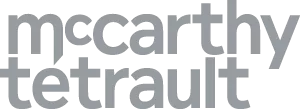- with readers working within the Construction & Engineering industries
- with Senior Company Executives, HR and Finance and Tax Executives
At 12:01 AM EST today, after a one-month pause, the United States proceeded with implementing 10% tariffs on imports of energy and energy resources1 from Canada and 25% tariffs on effectively all other imports from Canada and Mexico on the asserted basis of the powers granted to United States President Donald Trump under the U.S. federal International Emergency Economic Powers Act ("IEEPA"). As discussed in our client alert, "Canada Responds to U.S. Tariffs – What Businesses Need to Know", these tariffs were set to be implemented on February 4, 2025 but were delayed until today after discussions between President Trump, Canadian Prime Minister Justin Trudeau and Mexican President Claudia Sheinbaum led to a one month reprieve. While there had been some optimism that the temporary reprieve would become permanent, President Trump indicated yesterday that there was no longer any room to negotiate and the tariffs would proceed.
This significant development was met swiftly by retaliatory measures from Canada and Canadian provinces. The federal response is primarily being implemented through two phases of retaliatory tariffs (the "Retaliatory Measures") on goods totalling $155 billion in value of imports from the United States. Several provinces have also announced retaliatory measures, including restrictions on procurement from U.S. entities. Further retaliatory measures, including non-tariff measures such as export restrictions, are expected to be implemented as the U.S. rolls out additional tariffs that will likely impact Canadian goods.
This client alert summarizes the U.S. tariffs, and reviews Canada's initial response at the federal and provincial levels. It also provides an overview of other U.S. initiatives that could lead to the imposition of additional tariffs against Canadian imports, which will likely lead to additional retaliatory measures from Canada, and discusses some actions businesses can take immediately in response.
1. Background
On February 1, 2025, President Trump signed an executive order (the "Executive Order") applying a 25% tariff on all goods and 10% tariff on energy or energy resources originating in Canada and imported into the U.S., beginning on February 4, 2025. The Executive Order generally characterizes alleged "illegal migration" and flow of illicit drugs, such as fentanyl, from Canada (as well as Mexico and China) as justification for the application of these tariffs.
Following a call between President Trump and Prime Minister Trudeau on February 3rd, an agreement was reached to pause the tariff measures for one month to see if the border issues could be addressed. As part of the agreement which led to the tariff pause February 3rd, Canada moved forward with a $1.3 billion border security plan, which was first announced in December 2024 (as addressed in our client alert " 2024 Fall Economic Statement signals significant changes ahead for economic sanctions, modern slavery, and AML measures"). Canada also announced the appointment of a "Fentanyl Czar," listed transnational criminal cartels as terrorist entities under the Criminal Code, launched the Joint Operational Intelligence Cell, and established a Canada-U.S. Joint Strike Force on organized crime. Importantly, according to a statement released by Prime Minister Trudeau, "fentanyl seizures from Canada dropped 97% to a near-zero low of 0.03 pounds seized by U.S. Customs and Border Protection from December 2024 to January 2025".
Despite these initiatives and the reduction in fentanyl seizures, President Trump has continued to assert that tariffs are being imposed because of national security concerns on the U.S.-Canada border. This is likely in an effort to come within the IEEPA, which grants the president certain powers to "deal with an any unusual and extraordinary threat, which has its source in whole or substantial part outside the United States, to the national security, foreign policy, or economy of the United States" and within the Article 32.2 carve-out of the Canada-United States Mexico Agreement, which allows a party to implement otherwise prohibited measures for "the protection of its own essential security interests."
2. Canada's response
(a) The federal response
The Retaliatory Measures align generally with the measures that were announced prior to the one month reprieve on the implementation of the U.S. tariffs (the "Initial Measures"). Like the Initial Measures, the Canadian government has stated that the Retaliatory Measures impose 25% tariffs on $155 billion of American goods. Also like the Initial Measures, the Retaliatory Measures will be implemented as a two-step retaliatory plan, which first imposes a 25% tariff on approximately $30 billion worth of U.S. imports starting on February 4 ("Phase 1"), followed by additional tariffs to a further approximately $125 billion in annual volume of imports from the U.S. in 21 days' time. ("Phase 2").
The Department of Finance released a "list of products that are subject to Phase 1" which identifies 1,256 tariff codes on which the surtax is now imposed, and these tariff lines include meat, dairy, orange juice, peanut butter, wine, spirits, beer, coffee, appliances, apparel, footwear, motorcycles, cosmetics, and pulp and paper. The list of goods is effectively identical to what was proposed in the Initial Measures. However, in addition to what had been proposed in the Initial Measures, Phase 1 of the Retaliatory Measures also includes further goods that may be subject to certain special non-commercial import conditions or prohibitions under Chapters 98 and 99 of the Customs Tariff.
With respect to Phase 2, the Department of Finance has issued a "Notice of Intent to Impose Countermeasures in Response to United States Tariffs on Canadian Goods" ("Notice of Intent") and has identified the relevant tariff codes for the $125 billion in imports of additional goods from the U.S. The range of goods covered by Phase 2 is extremely vast, covering most every type of good and industry that may import U.S. origin goods into Canada.
The Notice of Intent indicates that Phase 2 of the tariffs will be subject to a 21-day comment period prior to implementation. It states that "the government is seeking input from business, stakeholders, and all Canadians regarding the impacts of the application of tariffs" to the goods identified in the Notice of Intent. A form has been provided in the Notice of Intent to submit views to the Canadian government, but an email address has also been provided "to provide additional information not included in the form, as well as any additional views or comments you would like to provide on Canada's tariff response".
As discussed in our client alert on the Initial Measures, the determination of whether a particular good falls within the scope of goods subject to retaliatory measures will require a careful assessment of the product's tariff classification. Businesses should develop and/or review their internal policies for tariff classification to ensure a clear delineation of which goods fall within the covered tariff items. In cases where they are unsure, businesses should consult with their customs counsel and advisors.
(b) Availability of tariff relief
The Notice of Intent also includes a section announcing a remission framework to consider requests for relief from importers who may need to seek transitional relief from tariffs. These remissions could allow for importers of goods subject to Phase 1 or Phase 2 tariffs (or other future tariffs) to be given relief from the payment of tariffs or refund of tariffs where already paid. The Department of Finance has released an overview of the process to seek remissions (the "Remissions Overview"). The Remissions Overview notes that:
"[T]he Government will consider requests for remission in the following instances:
- To address situations where goods used as inputs cannot be sourced domestically, either on a national or regional basis, or reasonably from non-U.S. sources.
- To address, on a case-by-case basis, other exceptional circumstances that could have severe adverse impacts on the Canadian economy."
The Remissions Overview also notes that remissions will only be considered where they are required to "address exceptional and compelling circumstances that, from a public policy perspective, are found to outweigh the primary rationale behind the application of the tariffs."
The Remissions Overview provides a template which identifies specific questions that should be addressed in any remission application. These questions request significant information on the company, the relevant goods that are subject to surtaxes, whether there are Canadian alternatives to sourcing these goods and how the goods are used by the company.
We note, based on our experience with previous remission programs, remissions are only provided for in exceptional circumstances. Remission applications may also take significant time to review, in part because the Department of Finance will consult with relevant Canadian industry stakeholders for their views on the remission. While remission may ultimately be helpful to certain Canadian businesses, it will not "undo" the effects of tariffs or provide a comprehensive fix. Generally, the simple fact that a Canadian or third country alternative may be significantly (but not prohibitively) more expensive has not been an accepted justification for granting a remission.
(c) Provincial responses
Provincial governments have also taken action in response to the Executive Order. Many provinces are implementing the measures that were announced when the U.S. tariffs were set to be implemented on February 4, 2025, as summarized in our February 3, 2025 client alert "Canada Responds to U.S. Tariffs – What Businesses Need to Know." British Columbia, Manitoba, Ontario, Quebec, New Brunswick, Prince Edward Island, Nova Scotia and Newfoundland and Labrador have all announced they will be pulling U.S. alcohol products from provincial liquor stores. Some premiers have stated that unsold alcohol will be put into storage and sold again if and when tariffs are removed. Additionally, some provinces like Ontario have announced that U.S. companies will be limited or barred from government procurement opportunities.
Several new initiatives have also been launched by the provinces. For example, Premier Ford of Ontario has stated that that Ontario will put a "25% export tax on electricity it sends to 1.5 million homes in Minnesota, Michigan and New York". Ford added that he will direct the province's energy producers to shut down the exports entirely if Trump moves ahead with even more tariffs on April 2, 2025, and has threatened to stop shipments of nickel to the U.S.
3. More U.S. tariff measures to come
Importantly, in addition to these blanket tariffs proposed by the U.S. specifically targeting Canada, there are a number of other trade and tariff initiatives being considered by the Trump administration that could will impact Canadian business. The following table provides a summary of the specific initiatives, the potential tariff rates that could apply, and relevant details on the timeline for implementation of these measures.
Potential Tariff Measures
|
Overview |
Possible Tariff Rate |
Timeline and Comments |
|
25% |
Expected to be implemented March 12. |
|
|
Determined on a country by country basis |
Expected to be implemented April 2. |
|
|
25% |
Could be implemented as early as April 2. (no confirmed date) |
|
|
No potential tariff rate at this time but will be determined by the investigation |
The Commerce Department has 270 days from February 25 to investigate this issue. Tariffs may be applied based on the results of this investigation. |
|
|
No specific details on the proposed tariff rate, but Trump told reporters that he was considering a 25% tariff rate on lumber and forest products |
The Commerce Department has 270 days from March 1 to investigate this issue. Tariffs may be applied based on the results of this investigation. |
The U.S. has confirmed that the steel and aluminum tariffs will be cumulative on top of the blanket tariffs discussed above. It is not yet clear whether the remaining anticipated tariffs will also be cumulative, but it appears likely at this juncture.
In addition, in Executive Orders dated March 2, 2025, the U.S. indicated its intention to revoke the de minimis exemption for shipments under $800 from Canada and Mexico. As discussed in our earlier client alert, the de minimis exemption allowed shipments under $800 to enter the U.S. with less rigorous inspection and without paying duties. The exemption enables many small-value goods from Canada and Mexico to avoid tariffs, reducing costs for consumers and businesses alike.
However, the timing of the revocation of the de minimis exemption is unclear. The relevant executive order states that it is set to go into effect "upon notification by the Secretary of Commerce to the President that adequate systems are in place to fully and expeditiously process and collect tariff revenue." While there may be some time before the order is implemented, businesses should begin to prepare for the likelihood that that the de minimis exemption will no longer apply for goods coming into the U.S. from Canada.
4. Actions businesses can take
As noted above, this situation is extremely fluid, and we expect new information on tariffs and countermeasures to come out of both Canada and the U.S. as the situation develops. This can make it extremely difficult for Canadian businesses to develop and implement strategies to respond to this situation.
As we discussed in a recent client alert, "A 30-Day Reprieve in the US-Canada Trade War: What Companies Should be Considering Now", there are actions that businesses can take to mitigate the damage caused by these tariffs. Among the actions that are key to take immediately is to determine the extent to which your business may be impacted by the tariffs, and specifically whether your imports of U.S. origin goods are subject to either Phase 1 or Phase 2 of the Retaliatory Measures. With regards to Phase 2, as discussed above, the Notice of Intent provides a consultation period where businesses can provide feedback on the identified list of goods that are set to be targeted for Phase 2. We encourage companies to consider this option, particularly where a Phase 2 tariff may have an unintended impact that the Canadian government may not realize.
McCarthy Tétrault's International Trade and Investment Law Group is advising a large number of clients across all sectors and industries on how to navigate the uncertainty caused by the U.S. tariffs and the Canadian countermeasures. We will continue to monitor and report on any further developments in this space.
Footnote
1 Defined as "crude oil, natural gas, lease condensates, natural gas liquids, refined petroleum products, uranium, coal, biofuels, geothermal heat, the kinetic movement of flowing water, and critical minerals" in Executive Order 14156.
To view the original article click here
The content of this article is intended to provide a general guide to the subject matter. Specialist advice should be sought about your specific circumstances.













